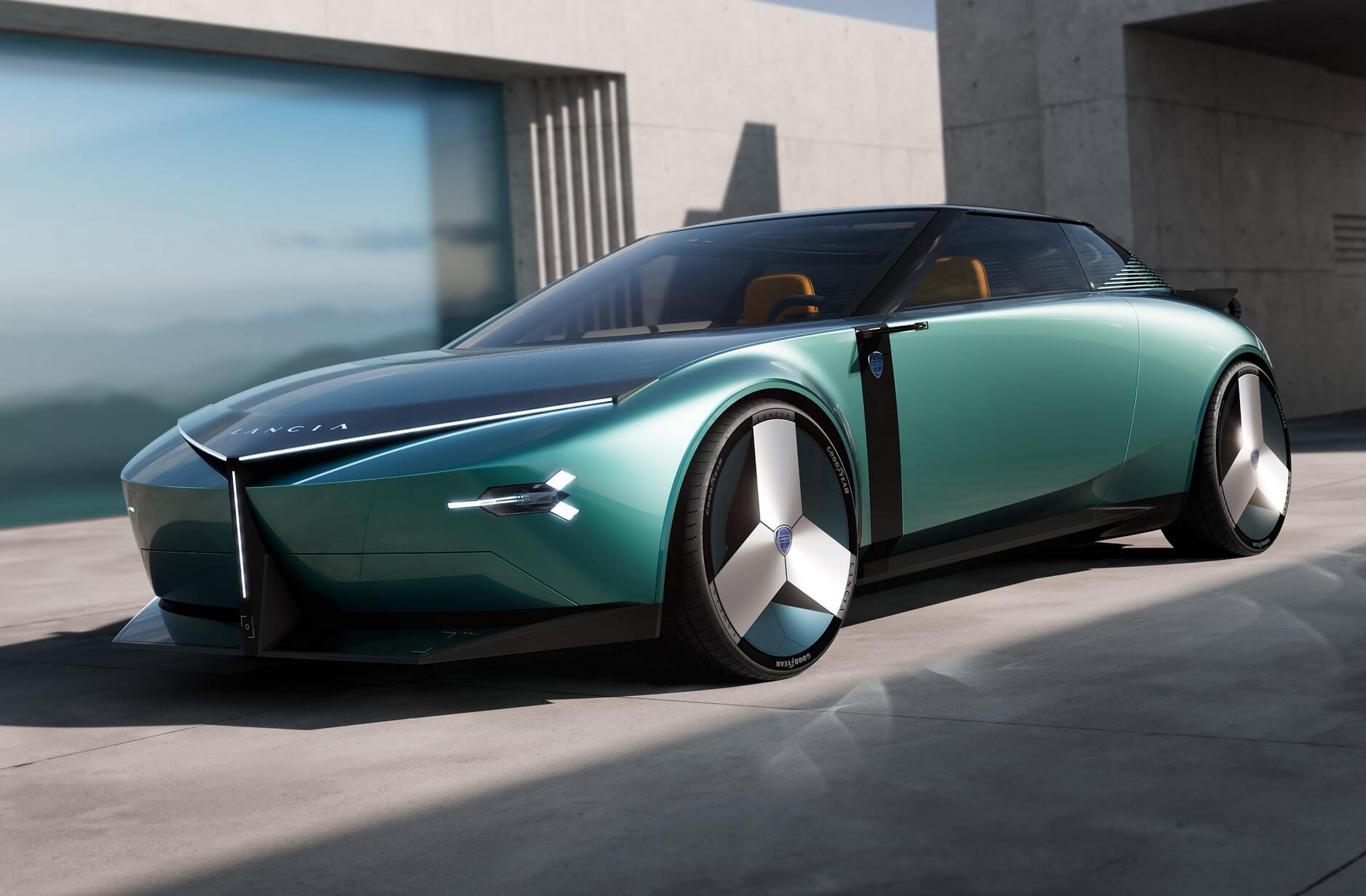The Lancia Pu+Ra HPE compact coupe outlines the Italian brand’s vision for the next decade in five key areas.
Lancia’s vision for the next 10 years has been revealed, embodied by the Italian firm’s new Pu+Ra HPE 2+2 compact coupe concept. While the one-off prototype doesn’t directly preview a production car, it does give an indication as to the styling direction and powertrain technology of future Lancia models.
The first part of the Pu+Ra HPE concept’s name refers to the brand’s new “pure and radical” design language, while HPE stands for “High Performance Electric” and references the badge used by the Lancia Beta shooting brake of the seventies and eighties. The car highlights the future for Lancia in terms of design, interior, sustainability, technology and electrification.
On the first count, the Pu+Ra HPE’s look has been inspired by many classic Lancia models, including the Stratos, which is referenced in the concept’s two circular rear lights. The brand also says the car’s streamlined design, with a heavy focus placed on aerodynamic efficiency to improve range, recalls the Aurelia and Flaminia models from its back catalogue.
However, the car also reinterprets many traditional Lancia design details for the modern era, with the brand’s ‘Calice’ grille made up of three LED light strips. This is one styling element that will feature on future Lancia models, we’re told.
Viewed from above, the circular design elements on the roof and bonnet, along with the solid intersecting lines, are said to be inspired by architecture, while the car’s interior has been designed around a ‘lounge’ feel.
A partnership with Italian furniture brand Cassina has resulted in two front seats picked out in bright yellow velvet trim that are more like classic armchairs than conventional car seats. The smaller rear seats are trimmed in a darker velvet material, sectioning off the cockpit – at 4.45m long, 1.95m wide and 1.35m high, the Pu+Ra HPE is a compact car, yet Lancia says that there is a surprising level of room in the rear given the car’s footprint.
When it comes to sustainability, Lancia says that 70 per cent of the surfaces occupants will touch inside are made from “eco-sustainable” materials and that this focus will continue in line with the brand’s strategic 10-year plan.
The Pu+Ra HPE’s technology has been designed around a system called S.A.L.A. (also the Italian word for room). This “minimal, smart virtual interface” combines audio, climate control and lighting functions as part of a huge, moveable display that can be angled downwards for users to interact with. The main portion of the screen forms one of the concentric rings visible through the Pu+Ra HPE’s glass canopy.
There are three modes: Immersive, Wellbeing and Entertainment. The former is said to amplify the driving experience, with Wellbeing seeing the car react to the mood of the driver to improve the experience through an AI system called TAPE (Tailored Predictive Experience). This “alters the atmosphere of the passenger compartment according to the external environment, adjusting the sound, air and light accordingly.”
Finally, Entertainment mode has been designed around waiting times when charging the car’s battery, with the firm’s new Ypsilon model due in 2024 confirmed to be the first new Lancia to use this tech. It will be followed by a new range flagship model in 2026 and a reimagined Delta in 2028, with both of the latter two cars set to be based on Lancia parent firm Stellantis’s STLA platforms.
The Pu+Ra HPE is 100 per cent electric, and while Lancia hasn’t outlined platform or powertrain specifics for the car, it says that the concept has “been made with technology modules (e.g. motor, battery, suspension, brakes, etc.) taken from the new Ypsilon”, which will most likely share components with Fiat’s all-electric 500 city car.
Lancia says it will target “best-in-class” range with its new models, which the firm says is around 700km. Targeted efficiency of 10km per kWh would place a future Lancia model’s usable battery capacity at around 70kWh, while the brand has also outlined that a rapid recharge of “less than 10 minutes” will be possible, presumably from 10 to 80 per cent.
The brand has confirmed that it will launch in its home country, as well as France, Spain, Germany, Holland, Belgium and Portugal.







